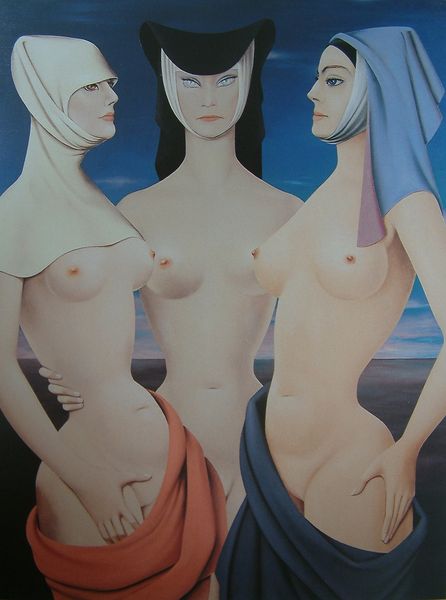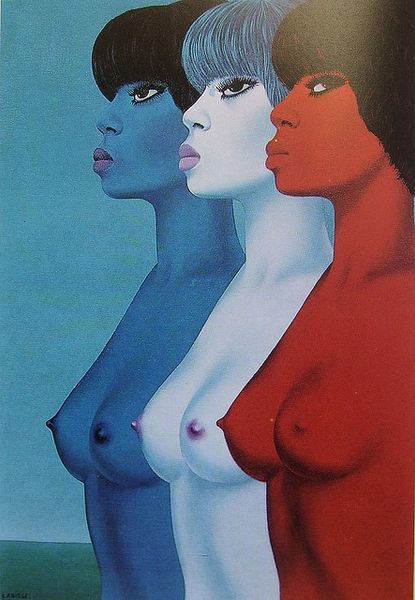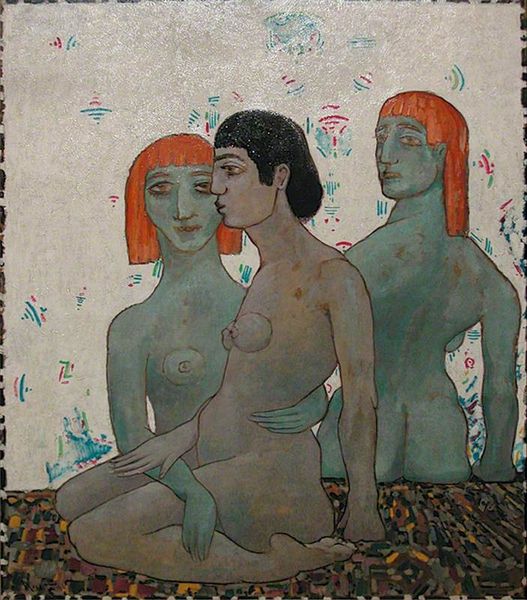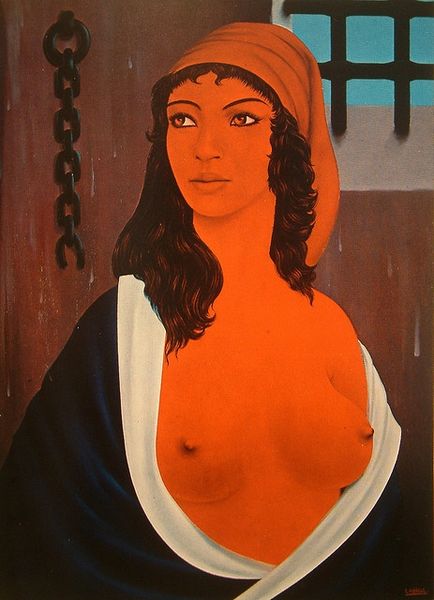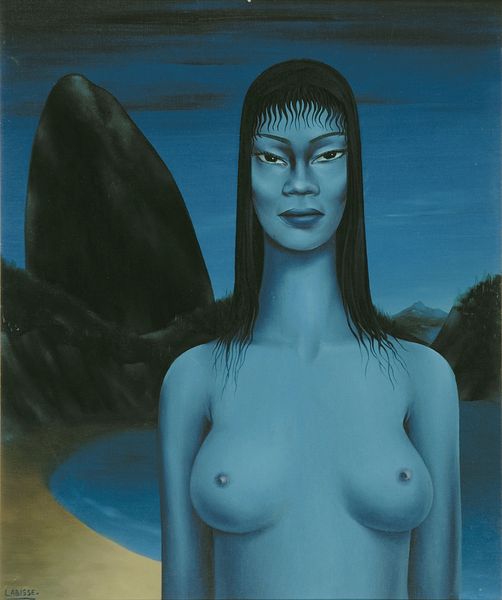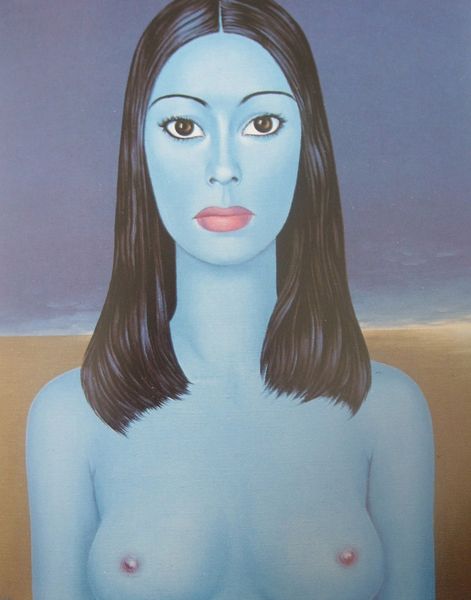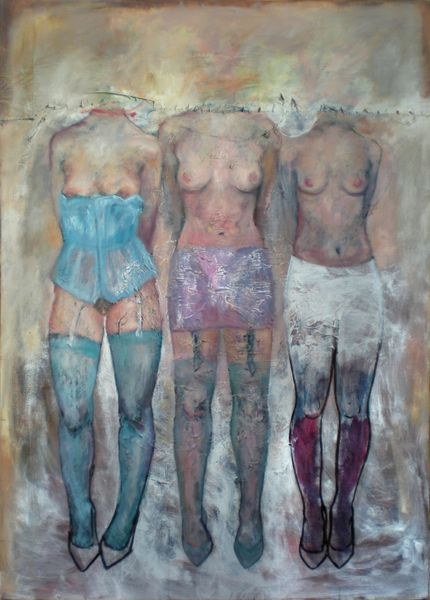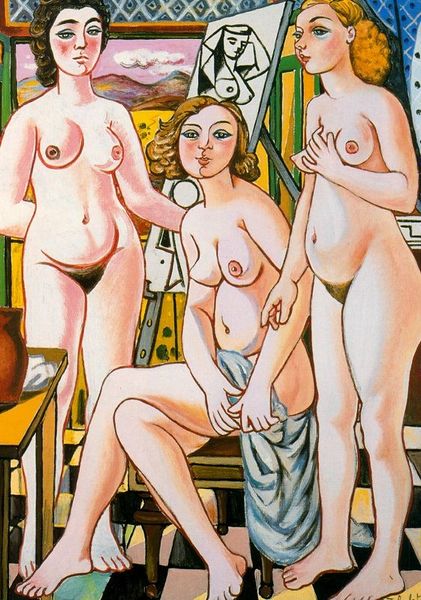
Copyright: Felix Labisse,Fair Use
Curator: This 1952 oil painting by Félix Labisse is entitled *La révolte des Anges*. It strikes me immediately. What are your first impressions? Editor: Well, it certainly commands attention. The trio of female figures... they're like a visual manifesto. Defiant, surreal, yet undeniably present. Curator: Precisely! Look at the symbolic weight carried by each figure. The red ribbon, for instance, can speak to notions of restraint, objectification or even rebellion. In contrast with the figure crowned by the thorn-like girdle, what might it mean for the other one to be tied by that bright bow? Editor: It's intriguing how Labisse juxtaposes these stark symbols with such traditionally posed nudes. It brings a provocative modern energy to a very established artistic trope, doesn't it? Makes one question the accepted narrative around the female form. Curator: That's the 'revolt,' isn’t it? Traditional symbolism gets subverted. Notice how their skin tones diverge. This color palette pulls archetypes into conflict, playing with perceptions of purity, temptation, otherness. It taps into something primal. Editor: And think about 1952! Post-war society, anxieties around gender roles, a burgeoning avant-garde art scene… This image enters a potent cultural space and redefines standards. A pushback against traditional expectations and assumptions? Curator: Yes! Each angel a symbol laden with the expectations, perhaps burdens, and projections assigned to women. A rejection of classical ideals, inviting us to unpack those layers of imposed meaning. Labisse holds up a mirror to society. Editor: Looking closer at that piercing blue skin, bound with what seems to be a thorny girdle… there's something disturbingly powerful and also vulnerable about that choice. Curator: A poignant way to express strength and frailty as intimately linked, or a subversion of it perhaps. It also may convey cultural ideas relating to color symbolism or possibly reveal subconscious fears around the perceived other. Editor: What I appreciate most about it is its ability to spark conversation, all these years later. How art can become an active agent in pushing for new perspectives, not just reflecting existing realities. Curator: It invites discourse about perception, power dynamics and artistic conventions, reminding us of the evolving social space in which art takes shape. A challenge to tradition in paint!
Comments
No comments
Be the first to comment and join the conversation on the ultimate creative platform.
